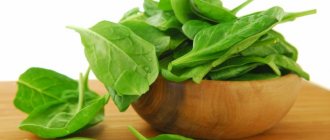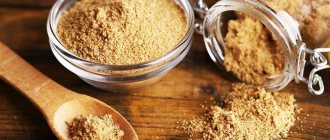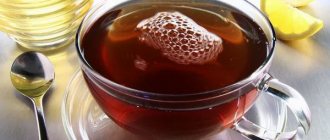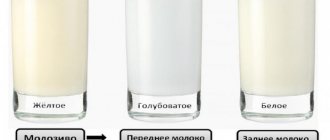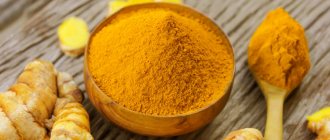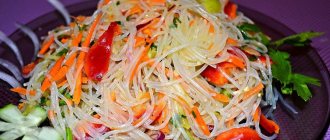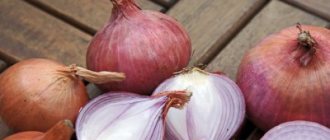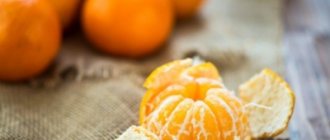Can a nursing mother drink it?
There are conflicting opinions about exactly how mint acts on the mother’s nursing body, and in particular on lactation. The essential oils contained in it can affect lactation, but let's figure out exactly how.
Different varieties of this plant contain substances with different properties. So, some types (spearmint and lemon mint) can increase the amount of milk, while another (peppermint), on the contrary, can reduce it.
Also, you need to consider the amount of drink used. If you drink peppermint tea once, nothing bad will happen and the milk, of course, will not be lost. But it is still better to refrain from using it. But you can drink spearmint and lemon mint, but in small quantities . Although it has a positive effect on lactation, you should not expect a strong effect.
From what month?
In the first few months of your baby's life, it is better to avoid this drink. It can be introduced into the diet of a breastfeeding woman in small quantities starting from 3-4 months, but not earlier.
Important! When tasting new foods during breastfeeding, be sure to monitor your well-being and your child’s reaction.
What are the benefits of mint drink for a woman?
Mint, being a strong antiviral agent, has a good effect on the female body during the cold season. It can strengthen the immune system and fight colds. This drink helps cope with headaches, and this is very important, because a young mother has to give up any pills.
Also, mint is a good sedative , and given that the female body has not yet adapted after childbirth, this property comes in very handy.
Mint contains a lot of vitamins:
- A – is responsible for the condition of bones, hair and is responsible for vision.
- C – strengthens the immune system, blood vessels and tissues, increases the body’s resistance.
- B1 – participates in metabolic processes, digestion and heart function.
- B2 – regulates the functioning of the thyroid gland.
- PP – strengthens the nervous system, improves heart function.
- B5 – helps in the absorption of other vitamins.
- B6 – prevents spasms, slows down aging.
- B9 – increases the body’s defenses.
As mentioned earlier, each variety affects lactation differently . It is best for a young mother to drink tea with the addition of spearmint and garden mint. They have a positive effect on lactation and the growing body of the child.
How does mint affect lactation immediately after childbirth?
There are no studies that would give a clear answer to the question of how mint affects lactation in the first month after childbirth. Most experts are inclined to think that it is still better for mothers to limit the presence of this plant in their diet. The first month after birth, the baby adapts to environmental conditions.
Therefore, mother should not eat foods that are allergens or contain very active ingredients. There are many such substances in mint, especially essential oils. This can negatively affect the baby’s fragile body. Therefore, such greens are not recommended during breastfeeding in the first month.
We invite you to familiarize yourself with Tips on keeping chickens at home for beginners: care and breeding of birds
Is it allowed in baby food?
A mint drink has a beneficial effect on the baby’s body due to the normalization of the emotional background. This tea will definitely be useful for a child, but at what age it can be introduced into the diet needs to be figured out.
When can you give it to your baby?
If a mother wants to introduce mint tea into her baby’s complementary foods, she should definitely consult a pediatrician about this. The doctor will help determine whether this drink can be introduced into the diet or whether it is too early and should wait.
In some cases, doctors allow tea to be given from the age of three months , while in others they recommend waiting until three years. On sale you can find children's teas with a calming effect, including mint leaves. One of them is Babushkino Lukoshko tea, the packaging of which states that this product is approved from the age of three months.
However, there is no need to rush to brew such tea for a 4-month-old baby to calm him down. At least without the consent of the pediatrician. The product may cause allergies in the baby or affect the baby's heart rate or breathing. After consulting with your doctor and making sure there are no contraindications, you can start giving this tea to children from 5-6 months.
Pepper
It contains a fair amount of menthol, known for its refreshing effect and specific smell. The same menthol generously added to toothpaste. However, what is good for the oral cavity can have a negative impact on the baby’s body and lactation status. And although the use of toothpaste will not harm the mother’s and child’s bodies, the menthol in mint can provoke the following negative phenomena:
- Reduced blood pressure. Moreover, the hypotensive effect will affect not only the mother, but also the baby. As a result, the baby's heart rate may be disrupted.
- Affects the reproductive system. It would seem - what is the connection between honey mint drink and the genitourinary system? It turns out that it is the most direct. In girls, the effect of menthol can provoke hormonal imbalances. Drinking peppermint drinks by adult men can cause a decrease in libido in the latter. Therefore, the extensive effects of menthol on young boys may lead to sexual problems in the future.
- Increases and decreases the amount of breast milk produced. This paradox is determined by the amount and frequency of mint drink consumed. At first, peppermint actually dilates blood vessels, which causes a rush of milk. However, its systematic use gradually has the opposite effect. Therefore, you should drink such drinks extremely rarely and only in situations where the lack of milk has reached a critical point.
We suggest you familiarize yourself with How to cook Ukrainian borscht - real Ukrainian borscht || How to cook Ukrainian borscht correctly
What is dangerous for mother and baby?
Only regular use will cause harm . But you need to understand that both mother and baby may have an allergic reaction to tea, and there may also be problems with the gastrointestinal tract.
To protect yourself and your child, be sure to consult your doctor before use.
He will help determine the optimal age when this drink can be introduced into the diet, and will also advise a safe amount of mint to brew for a child.
How can you replace mint tea during lactation?
There is constant debate about the safety of mint during breastfeeding - some mothers say that this herb has a beneficial effect on lactation, while others claim that mint tea contributes to the complete disappearance of milk.
Who is right? In fact, both sides are right, it’s just that different varieties of mint have completely opposite effects on the amount of milk in nursing women.
First, let's look at peppermint - the aroma of this herb is refreshing and soothing, the tea has a pleasant taste due to its high menthol content. You can lubricate your nipples with peppermint oil after feeding to prevent cracks.
Benefits of peppermint:
- eliminates inflammatory processes;
- has a mild sedative effect;
- helps to quickly cope with headaches;
- has an antispasmodic effect;
- improves the functioning of the digestive system;
- prevents the development of venous insufficiency and hemorrhoids;
- reduces arterial parameters.
But all the beneficial properties appear with moderate consumption of mint tea during breastfeeding. If you drink this drink once, then against the background of vascular relaxation there will be a noticeable flow of milk into the mammary glands. But if you drink such herbal tea constantly, then soon you will have no milk left at all.
During lactation, many foods are prohibited for a nursing mother. The desire for a particular dish can be very strong. What can you replace mint with during breastfeeding? In this case, you can brew a drink from chamomile and lemon balm. Another replacement option is to prepare simple green tea by adding a few mint leaves to it, after pouring boiling water over it. It perfectly removes thirst.
All types of mint are very useful, and the delicate aroma of this herb cannot be forgotten. Is it possible to drink mint while breastfeeding? Each mother decides for herself, taking into account the characteristics of her and the child’s body.
Hot tea helps many people relax after a busy day. You can add various herbs, berries, milk or honey to it. One of the best options is mint.
It is healthy and gives the drink a unique aroma and taste. Young mothers are wondering if mint can be consumed while breastfeeding.
Let's try to figure out whether it will harm the baby and in what quantity mint infusions can be consumed during lactation.
The question of whether you can drink mint tea while breastfeeding has not been studied in depth in scientific and medical circles. Accordingly, experts cannot give specific recommendations.
However, based on many years of experience, we can highlight the most obvious properties of mint infusion. Mint promotes milk production in nursing mothers. However, before using it, the amount and frequency should be determined in conjunction with a leading physician.
Otherwise, in case of overdose, the effect may be diametrically opposite.
Tea with mint during breastfeeding (breastfeeding) has the following beneficial properties:
- a calming effect that neutralizes migraines and lowers intracranial pressure;
- normalizes metabolism and gastrointestinal function;
- regulates blood pressure (helps treat hypertension);
- promotes the treatment of acute respiratory viral infections and colds;
- helps normalize sleep.
Many women drink mint tea while breastfeeding
Among other things, mint has antimicrobial properties and activates the production of enzymes in the digestive tract. This helps relieve the baby from colic and constipation. But, as already mentioned, you first need to determine how often and in what quantities the plant can be added to tea.
New mothers worry about all aspects of caring for their baby. Including whether you can take mint while breastfeeding a newborn. Because the plant may affect the child differently than the mother’s body.
If there are problems in the gastrointestinal tract, drinking mint infusion will help normalize the child’s digestion. Thereby relieving him of colic, constipation or flatulence.
The high content of antioxidants and flavonoids in mint makes it beneficial for the immune system of the newborn. Entering the baby’s body through mother’s milk, the substances strengthen his health and help fight viruses, infections and pathogenic bacteria.
The plant itself can cause an allergic reaction in an infant. It can appear in the form of a simple rash, and in more severe cases - in the form of swelling or itching.
In addition, mint has an effect on the body's hormonal levels. And if for adults this effect is practically unnoticeable, then in newborns it can slow down hormonal development (especially testosterone production).
Modern medicine has no answer to the question of whether a nursing mother can include mint tea in her diet. Or rather, there are no research results on the benefits or harms of such a drink during lactation. But there are general recommendations based on the knowledge of traditional medicine.
Add 1-2 mint leaves to the drink per cup (standard, 200-250 ml). Exceeding the recommended amount may have undesirable consequences for the health of the newborn baby.
Mint contains many beneficial substances
You should drink no more than 2 cups of mint tea per day. Ideally, one in the morning and one in the evening. Again, increasing the frequency of use is not recommended, as this can negatively affect the baby’s body.
Tea lovers recommend adding mint leaves to herbal infusions. You can purchase a ready-made mixture at the pharmacy or make it yourself. And add a few leaves there (if you dry them first, you can grind them in a mortar). This way, a nursing mother will be able to control the amount of mint in her drinks.
Three varieties of the plant are used to add to tea: spearmint, lemon mint and peppermint. The peppercorn contains a large amount of menthol, while the spikedone contains carvone. Menthol stimulates the production of fluids in the body, therefore helping to activate milk production. But only with a small dosage.
Carvone has a similar property, but is most often compared to fennel, which is included in all teas for nursing women. But if the dosage is exceeded, it can affect the baby’s mental state, so you need to be careful with it.
https://www.youtube.com/watch?v=-UOghf-fU4k'
Doctors recommend drinking teas with the addition of lemon and spearmint during the postpartum period, and with peppermint during the end of feeding. The first two types promote the production of breast milk and have soothing properties. And the menthol in peppermint reduces lactation, and will be useful just at the moment of its completion.
In any case, you should include mint infusions in your diet only after the child has ruled out an allergy or individual intolerance to the plant. To do this, you need to try a small amount of mint tea and wait about a day. If no signs of pathogenic reactions appear, the drink can be safely drunk.
It is not recommended to exceed the permissible dosage of the drink
Despite its beneficial properties, mint is not recommended during breastfeeding in the first month. Because the child’s body is still too weak and is just adapting to the environment.
Starting from the second month, you can slowly begin to prepare mint infusions. You can use one of the most popular recipes:
- With the addition of sage. You will need to mix 1 tablespoon of mint and 1 tablespoon of sage (chopped) in a container. And pour the mixture with 1 liter of hot water. The infusion should be allowed to stand for 20 minutes. After which you can drink.
- Mint. You need to pour 1 teaspoon of chopped mint (or 10 leaves of fresh) into 1 liter of boiling water. And let it brew for about 30 minutes. The drink can be stored in the refrigerator and consumed chilled.
- Berry. Fresh or dried berries (raspberries, rowan berries, blackberries, blueberries, etc.) are added to the standard mint infusion.
You can add leaves of other healthy plants (fennel, cumin), citrus fruits (zest), ginger or rose hips to mint tea. Any ingredient should also be checked for allergies in the child before use.
During the period of breastfeeding, a young mother should be especially vigilant about the foods she eats. Otherwise, instead of being beneficial, they can negatively affect the newborn’s body. Mint infusions should be drunk carefully, in small quantities. If there are concerns about their safety for the baby’s health, then avoid them altogether for at least a year after birth.
During pregnancy and during breastfeeding, a young mother often limits herself in food, giving up her usual and very favorite delicacies.
We suggest you read why an orchid does not bloom - mistakes in care, how to help the plant
And this is justified, because now the baby’s health depends on her nutrition. A completely harmless product, it can cause severe allergies in the baby or provoke colic.
To prevent this from happening, you need to be very careful when choosing foods and drinks.
But what to do if your favorite product or drink is not only tasty, but also healthy. For example, mint tea is pleasant and soothing. Recently, more and more people are making their choice in its favor, abandoning the usual coffee and classic black tea. But what should you do during lactation? Can a nursing mother take mint?
Experts have different opinions on this issue; some say that mint can be harmful during breastfeeding, while others say the opposite. To make the right choice, you need to understand what is included in the mint herb. And understand how it affects the human body.
Variety of varieties
There are more than two dozen varieties of mint in the world. Each type is unique and inimitable. The composition of each variety contains completely different components.
Lemon, ginger, menthol, peppermint and garden mint are the most famous varieties that we often hear about. But for the preparation of tea drinks, lemon mint, peppermint and garden mint are often used.
This variety has a delicate and soft taste, the menthol content is minimal. It contains carvone, an aromatic substance that has a beneficial effect on milk production.
Recommendations for use during breastfeeding
If the young mother consulted with the doctor and he gave the go-ahead, then to increase lactation, tea can be brewed in the following way: 1 teaspoon of the dried plant is poured with a cup of boiling water and infused.
You can brew garden mint (lemon balm) in the same way. If you don’t know whether to drink mint tea or not, then along with this recipe, you can try adding one mint leaf to your regular tea for a minute . The content of this plant in tea will be minimal, but you will still be able to experience your favorite taste of mint tea.
How to properly introduce it into the diet?
Like all other products, mint tea should be introduced into the diet of a nursing mother gradually. It is better to start with one cup a day, and if everything is in order, the amount can be increased to several cups. The main rule is to introduce new products in small quantities and be sure to monitor the baby’s condition and reaction.
Peppermint
The most popular is peppermint, which received it due to the increased menthol content in the leaves. This property allows this herb to be widely used in medicine and cosmetology.
Menthol is present in many medications and toothpaste. But is it possible to take peppermint during breastfeeding?
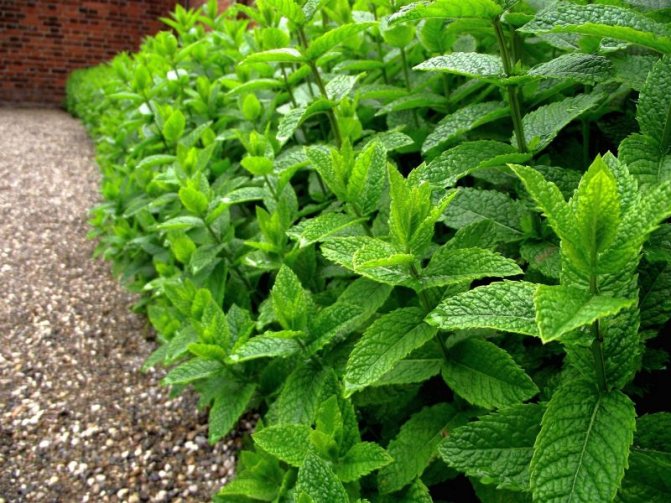
Beneficial features
This type of mint has many advantages:
- It calms the nerves well and relieves anxiety.
- Reduces pain and relieves inflammation of varying degrees.
- Effectively used as a diuretic and choleretic agent.
- Acts as an anti-vomiting medicine. A mixture of pomegranate and mint juice helps relieve nausea. Can be used even during pregnancy.
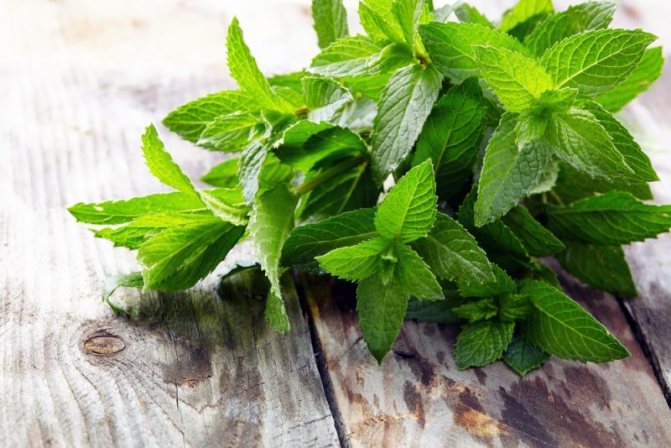
Possible harm
With all the positive properties, peppermint during breastfeeding can also cause irreparable harm to a nursing mother:
- Menthol helps lower blood pressure, which has a negative effect on a child’s small body. The baby receives a certain amount of essential oils through breastfeeding, as a result of which the heart rhythm becomes irregular. This is very dangerous for the health of the baby.
- Menthol is a site of large accumulation of estrogen, a female hormone. Testosterone, the male hormone, is suppressed. Therefore, peppermint during lactation is contraindicated for women who have given birth to boys, as sexual problems may arise in the future.
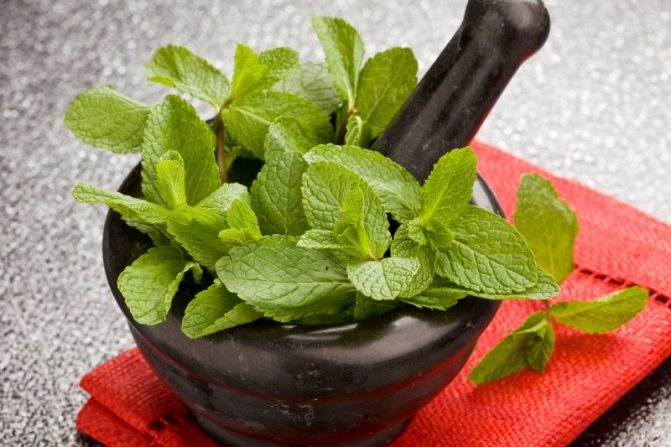
How to use it correctly during breastfeeding
In isolated cases of drinking mint tea while breastfeeding, vasodilation occurs, which helps to increase blood circulation in the chest. As a result, there is a rush of milk. Therefore, fans of this tea can afford to drink a cup, but no more than once every seven days. To reduce the presence of menthol in the herb, you need to dip the leaves in boiling water in advance.
If you have problems with lactation, it would be better to exclude mint tea from your diet while breastfeeding. Repeated use of it has the opposite effect. The milk may disappear completely.

How to stop lactation with peppermint
Peppermint helps a nursing mother stop lactation. To do this you need:
- reduce the number of feedings to once a day;
- when milk stops flowing into the mammary glands between feedings, then you can start preparing the decoction;
- The tea drink is brewed as follows: 1 tbsp. l. Add dry grass to one liter of boiled water and leave for 30 minutes. For greater effect, it is recommended to add 1 tbsp. l. sage;
- We use this decoction for 4 days, three to four glasses a day;
- Swelling and pain in the chest may occur. In this case, you can express a little milk to relieve discomfort. If necessary, this course should be repeated;
- Feeding the baby after using this method is strictly prohibited.
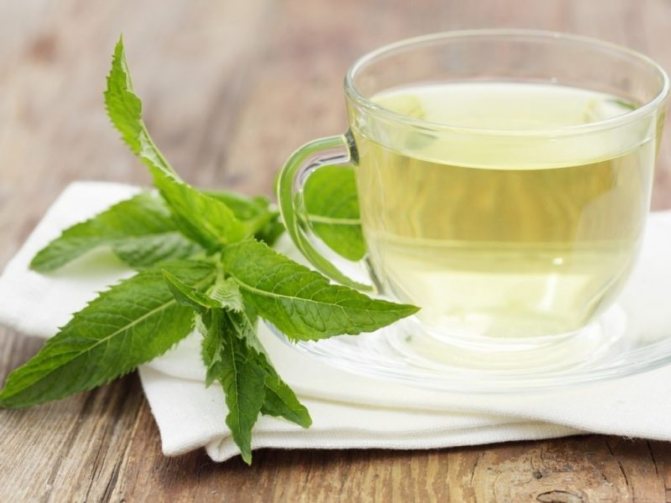
How to drink herbal teas during lactation
During lactation, within reasonable limits, you can consume not only mint, but also lemon balm, which is also called lemon grass.
Benefits of lemon balm:
- helps with neuroses, relaxes the nervous system, improves sleep quality;
- normalizes the functioning of the digestive system in mother and baby;
- eliminates migraine, manifestations of hypertension;
- drinks based on lemon balm are indispensable for cardiovascular pathologies and respiratory diseases.
Drink recipe
To prepare the drink, take 1 tbsp. l chopped herbs, pour 250 ml of hot but not boiling water, simmer in a water bath for a quarter of an hour. Let the tea brew for 10 minutes, strain.
Any herbal teas should not be consumed in the first month after giving birth, but it is better to wait until your baby is 3 months old. The aromatic drink can be consumed 200-250 ml once a week.
If you decide to stop lactation, then, in addition to regular pumping, prepare yourself mint tea - mix dried mint and sage in equal parts, 1 tsp. pour 200 ml of boiling water over the mixture and leave in a sealed container for half an hour. You can drink this drink 3-4 times a day for four days; you need to prepare a new portion every day. Remember that if you start drinking this tea, you should not put your baby to your breast - menthol in high concentrations is dangerous for the baby.
If your plans do not include stopping breastfeeding, then simply add 2 mint leaves to green tea; it is better to soak them in hot water for a few minutes beforehand - this will not particularly affect the taste, but will help reduce the concentration of menthol.
You can replace mint tea with chamomile tea - it also calms well, eliminates inflammatory processes, and improves the functioning of the digestive system. To prepare the drink you need to pour 1 tsp. crushed dry inflorescences 300 ml of boiling water, leave for a quarter of an hour, strain.

It is better to collect the herbs for making tea yourself, or purchase them at a pharmacy. If mint, lemon balm, and chamomile grow in your garden, which is located away from roads and businesses, feel free to collect and dry the raw materials for aromatic and healthy drinks. Otherwise, buy herbs at the pharmacy - all medicinal plants are collected in environmentally friendly places, they undergo radiation control.
Curly mint
Peppermint is the most common variety of the plant. Today it is widely used in the form of powders, extracts, essential oils in the food, cosmetic, pharmaceutical, chemical, and perfume industries. But when breastfeeding (BF), due to the high menthol content (about 60%), it is better to exclude it from the diet.
Menthol can reduce the amount of milk and significantly shorten the lactation period. Getting from mother to child, it often causes irritation of mucous membranes and causes allergies, and adversely affects the heart rate. And also, love for mint can result in low blood pressure (hypotension) for both the mother and her baby.
Important! Products with mint essential oils are used to completely stop milk synthesis if the child is already old enough.
In addition to peppermint, spearmint and lemon mint are sometimes found in foods and drinks. The first does not pose a danger in the postpartum period - it does not contain menthol, but it contains a lot of carvone (about 80%). As a result, the plant, on the contrary, enhances lactation and helps with colds, pain in the gastrointestinal tract, and flatulence.
Reference! Dill, fennel, and cumin contain even more carvone, so if you have breastfeeding, you can try to diversify your menu with them.
Lemon balm during breastfeeding can restore vigor and become a natural antidepressant. It only slightly enhances the production of breast milk, but sometimes causes abdominal pain in mother and child, so it is worth using the spice in small quantities at first.
Mint has a pleasant fresh smell and antiseptic properties, relieves fatigue and muscle pain, reduces skin itching and irritation, and reduces headaches and toothaches. Thanks to these properties, the plant became popular in ancient Rome.
In addition, mint leaves are useful for gastritis and colitis, have a positive effect on vision, digestion, liver and gall bladder function, and eliminate hiccups and nausea.
We suggest you familiarize yourself with pruning geraniums after flowering
Main contraindications:
- Low blood pressure and strong reaction to menthol.
- Vein diseases.
- Tendency to allergic reactions.
- Chronic stage of heartburn.
- Hormonal imbalances.
- Difficulties in conceiving a child, suspicion of infertility.
A newly born baby is still poorly adapted to life and should be carefully protected. The following tips will help with this:
- At the very beginning of breastfeeding, while the baby is still less than a month old, it is recommended to stop eating any mint.
- The plant can be included in the diet in small portions, while carefully monitoring the baby’s reaction.
- Instead of mint tea, you can drink leafy green tea (high in antioxidants) or chamomile tea (soothing, hypoallergenic).
To summarize, it should be said that mint, especially spearmint or lemon mint, can not be excluded from the diet when breastfeeding. However, it should not be abused until the child is several months old.
The situation is completely different with spearmint (garden). It does not contain menthol, but contains carvone. This substance gives the grass a pleasant aroma and helps increase lactation.
This type of mint is more difficult to find. Many people grow it in the garden, hence the second name. If you purchase this plant at a pharmacy, be sure to study the composition. So can a nursing mother have tea with spearmint? It is not only possible, but also necessary, but within reason.
Beneficial features
Eating mint has many positive aspects. Its use is effective:
- to improve appetite,
- for urolithiasis,
- for nausea and vomiting,
- if you have seasickness,
- for pain of various types,
- to eliminate inflammation,
- for skin diseases,
- to calm the nervous system.
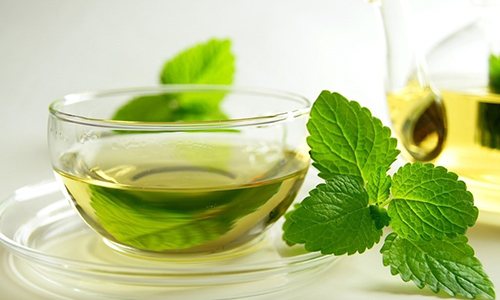
In all these cases, mint acts as an antiseptic and as an expectorant, antispasmodic, and sedative.
Possible harm
You can never be sure that a new product being introduced is completely safe for babies. The same goes for mint.
It can cause allergies. In addition, no one knows how the baby’s body will react to an excess of components. Therefore, you need to use herbal preparations very carefully.
Curly or spearmint has a less pronounced taste and smell, but is considered safer for nursing mothers. The plant has a calming property, helps to relax, get rid of stress and fatigue, and normalizes the functioning of the digestive tract.
Benefits of Spearmint:
- improves appetite, eliminates nausea, motion sickness, indigestion;
- helps with kidney stones;
- reduces the likelihood of developing flatulence and colic in mother and baby;
- has anti-inflammatory, expectorant properties;
- The plant can be used for painful menstruation, rheumatism, toothache.
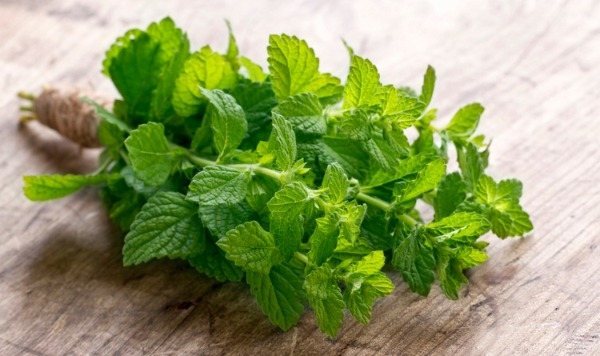
But the main benefit of spearmint for nursing women is its high content of carvone; this substance has a beneficial effect on lactation and is present in anise, cumin, and fennel.
You can make not only tasty and healthy drinks from mint, but also add it to various desserts, salads, and okroshka. If your baby does not have food allergies, you can treat yourself to flavorful and original dishes 4-6 months after the birth of the child.
Peppermint cookies
What is necessary:
- spearmint – 20 g;
- granulated sugar – 70 -100 g;
- egg – 1 pc.;
- butter – 100 g;
- sifted flour – 200 g;
- baking powder – 0.5 tsp.
How to cook:
- Turn the oven on 180 degrees. Rinse the mint and dry. Finely chop.
- Mix mint and sugar, beat in a blender, add butter and egg, beat again until smooth.
- Add flour, baking powder, knead the dough - it should be sticky.
- With wet hands, form small balls, place them on parchment, and press them on top with a fork.
- Bake for 20 minutes until nicely browned.
Mint ice cream
You can make mint ice cream very simply and quickly - an indispensable treat for hot summer days.
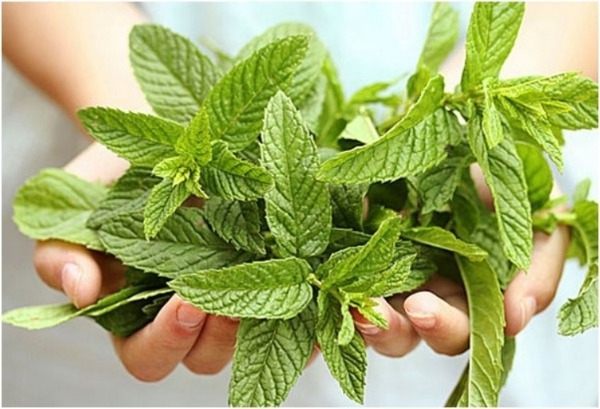
Add 20 g of chopped mint to 200 ml of heavy cream, bring the mixture to a boil, cool under the lid for 2-2.5 hours. Remove the mint, add another 200 ml of regular cream to the mint mass, beat with a mixer, carefully stir in 200 ml of condensed milk. Place the future ice cream in molds, cover with cling film, and place in the freezer overnight.
